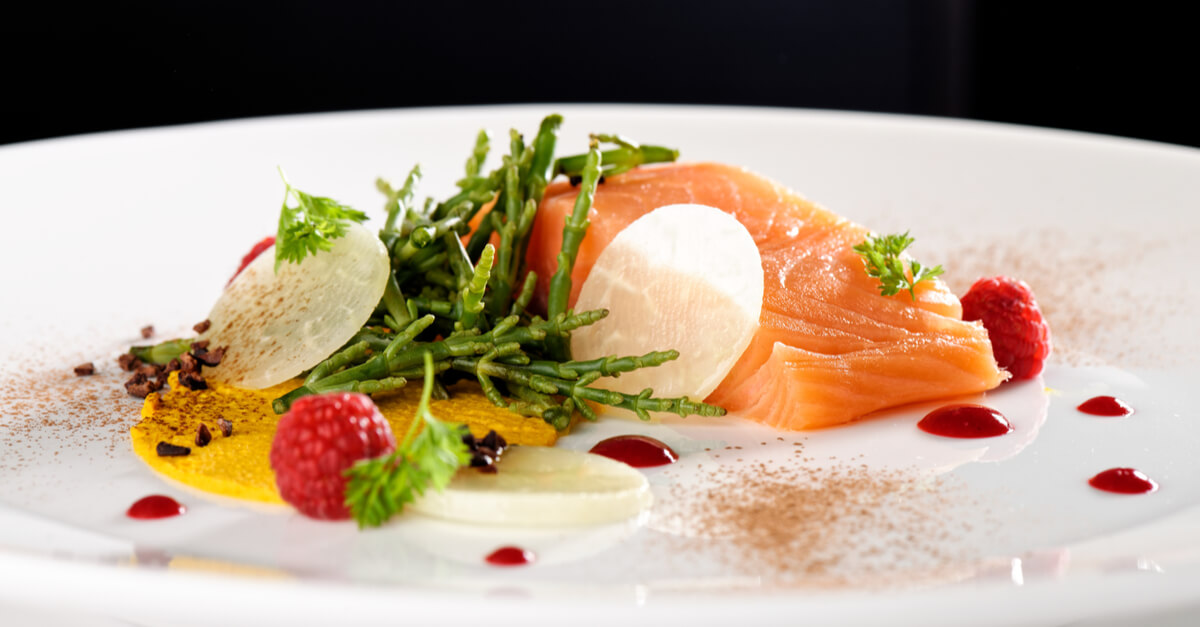The Struggle:
It seems like a lot of modern food and drink is attempting to create the impossible. Dishes that excite the mind and make the customer think, “How in the world did they create this”? Foods that float, Edible menus, decorative rocks on your table that turn out to be edible, all of these are real examples of dishes that actually exist. Granted they are not at every table in every restaurant. But when you do have an amazing experience at an amazing restaurant it makes it that much more special. With these Ask-A-Chef articles I do answer common questions, but I also try to explain the things that we take for granted with cooking. I like to write about the “why’s” of cooking. Why does food stay pink when it’s cured? Why does food turn brown with it oxidized? And in this article I wanted to talk about viscosity and suspension, because it’s something that is so easily overlooked and not always fully understood.
“Why does suspension work? Wait, How does viscosity work?”
Thicc With a C and K
All too often we think of liquids and their “thickness”. Thickness is an informal way of thinking about viscosity, it doesn’t really explain what’s happening with the liquid. Liquid is measured in a unit known as Poise, but more commonly we use Centipoise (cp). The reason we measure in cp is that water has a measurement of 1 cp at 68°F (20C). Yes, before you ask the temperature does play a part in the measurement, but we will get to that later. What this means is that the more viscous a liquid is the slower it will move. The reason behind this is the internal friction of the liquid. The more friction the slower moving the liquid will be. For instance honey has a high sugar content and at 68°F (20C) it has a cp of 10,000! But let’s say we heat the honey, doing this spreads out the molecules and makes the liquid more free flowing. But if we were to place the honey in a refrigerator until it is cool it will tighten the space of those molecules and make them move even slower. This happens with all liquids the temperature will always affect the viscosity and in return it could change the presentation of a dish. Before using the method of checking the napé of the sauce, a traditional method to check the thickness of a sauce. Try equating the thickness to something similar, do you want it to have the same viscosity as cream, honey, ketchup, etc? Lastly, here’s a fun list of some common ingredients and their cp rating. Milk 3cp, Corn syrup 5,000cp, Ketchup 50,000cp, peanut butter 250,000cp.
I’m Flying Jack!
Now that we understand viscosity and why it works. Let’s cover suspension, as it can make for some really fun presentations. The addition of ingredients like Gellan Gum F and Xanthan Gum in the correct ratios can yield a drinkable liquid that has the ability to suspend small items within the drink. Take for instance our French 75 recipe that can suspend not only black currant spheres but the carbonation itself! I like to refer to it as the cocktail that gravity forgot. Ferran and Albert Adria used xanthan gum to create a white sangria that could suspend finely diced fruits for a stunning presentation. But it doesn’t all have to be about drinks, these ingredients can help your sauce making as well. For instance. sauces that have a small amount of pesky sediment that always sinks to the bottom can be fixed with xanthan gum. A little bit of xanthan gum can help suspend the particles and slightly thicken the sauce for a nicer presentation. This also reduced the need to shake the bottle before using the sauce. Suspension can also be used for solid gels, adding one of these ingredients will help keep the particles suspended while the gel sets. There are numerous ways that we use suspension and viscosity in cooking every time we cook. The more we know about it, the easier it will be to get the right outcome each and every time.
Ready to get Cooking?
Give our Carbonated French 75 recipe a try! Capture the effervescence of sparkling wine in this unique take on the French 75. Half cocktail, half fluid gel – time slows and lingers for this carbonated creation.
Have a Question? Ask a Chef!
Modernist Pantry is here to help professional and home chefs transform food. We’re honored so many of you reach out to our test kitchen for problem solving and inspiration. Have a question? Click to Ask a Chef!


